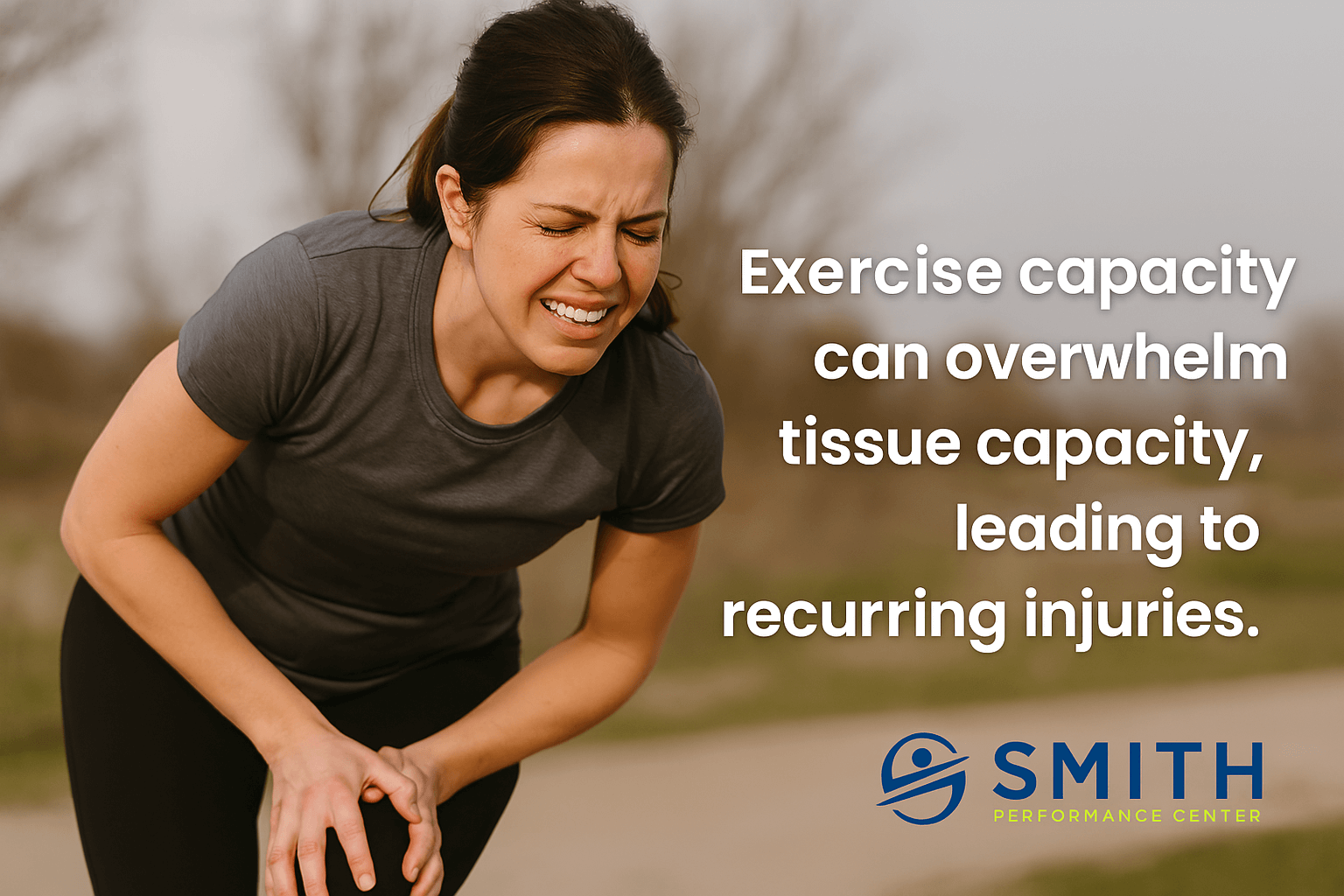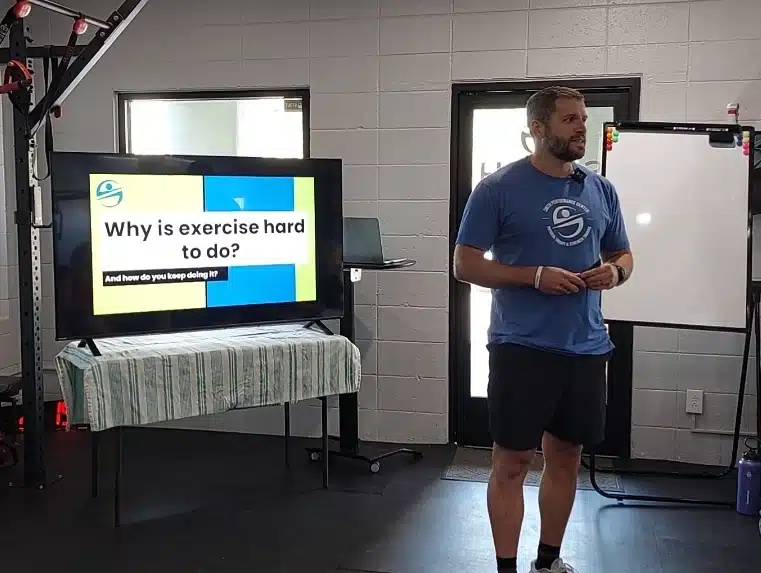
Osteoporosis & Lifting: How SPC Builds Bone Safely
Learn how Smith Performance Center helps people with osteoporosis and lifting programs that build stronger bones safely through progressive strength and impact training in Tucson.

Learn how Smith Performance Center helps people with osteoporosis and lifting programs that build stronger bones safely through progressive strength and impact training in Tucson.

You’re Doing the Work—So Why Does Your Body Keep Breaking Down? You show up. You put in the effort. Whether it’s running, lifting, group fitness, or weekend hikes, you’re trying to stay active. But despite the commitment, you keep dealing with recurring injury from exercise. Pain shows up, progress stalls, and your body feels more unpredictable than it should. This isn’t about motivation. It’s about biology.The real issue is a mismatch between what you can make yourself do and what your body is built to tolerate. At Smith Performance Center, we call that gap the difference between exercise capacity and tissue capacity the rehab standard—and it’s one of the most overlooked problems in rehab and training. What Is Exercise Capacity? Exercise capacity is your ability to push through effort and accumulate work over time. It’s what most people think of as “fitness.” It includes: Exercise capacity reflects what you’re capable

Starting an exercise program usually begins with a detailed look at your goals and a plan to achieve them. Showing up consistently is assumed. After decades in the health and wellness industry as a personal trainer, strength coach, exercise physiologist, and physical therapist, I’ve seen firsthand that the problem isn’t your goals, program structure, or knowledge of the importance of exercise. You already know regular exercise is crucial. Nor is the problem finding a place to work out, scheduling gym time, or getting the right equipment for home. The real issue is execution: showing up and doing the work. Exercise is hard to start. Exercise is hard to maintain. Why? There are four major reasons: Evolutionary Mismatch We did not evolve to exercise; we evolved to conserve calories. Our ancestors developed in an environment with limited access to calories. The body’s ability to conserve energy allowed humans to survive periods

Learn how Smith Performance Center helps people with osteoporosis and lifting programs that build stronger bones safely through progressive strength and impact training in Tucson.

You’re Doing the Work—So Why Does Your Body Keep Breaking Down? You show up. You put in the effort. Whether it’s running, lifting, group fitness, or weekend hikes, you’re trying to stay active. But despite the commitment, you keep dealing with recurring injury from exercise. Pain shows up, progress stalls, and your body feels more unpredictable than it should. This isn’t about motivation. It’s about biology.The real issue is a mismatch between what you can make yourself do and what your body is built to tolerate. At Smith Performance Center, we call that gap the difference between exercise capacity and tissue capacity the rehab standard—and it’s one of the most overlooked problems in rehab and training. What Is Exercise Capacity? Exercise capacity is your ability to push through effort and accumulate work over time. It’s what most people think of as “fitness.” It includes: Exercise capacity reflects what you’re capable

Starting an exercise program usually begins with a detailed look at your goals and a plan to achieve them. Showing up consistently is assumed. After decades in the health and wellness industry as a personal trainer, strength coach, exercise physiologist, and physical therapist, I’ve seen firsthand that the problem isn’t your goals, program structure, or knowledge of the importance of exercise. You already know regular exercise is crucial. Nor is the problem finding a place to work out, scheduling gym time, or getting the right equipment for home. The real issue is execution: showing up and doing the work. Exercise is hard to start. Exercise is hard to maintain. Why? There are four major reasons: Evolutionary Mismatch We did not evolve to exercise; we evolved to conserve calories. Our ancestors developed in an environment with limited access to calories. The body’s ability to conserve energy allowed humans to survive periods